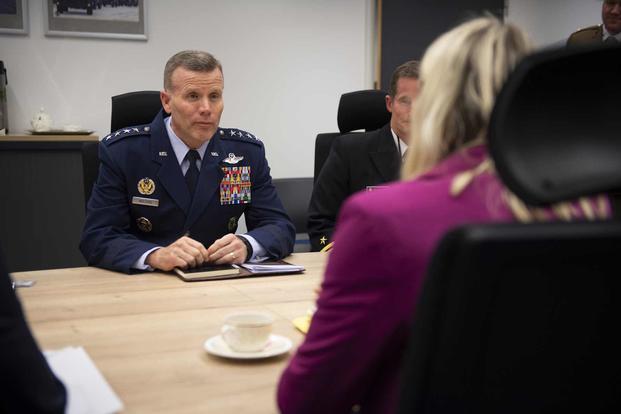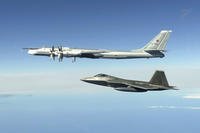The head of U.S. European Command said he has put in a request to host two additional U.S. Navy guided missile destroyers (DDGs) in the European theater that would be "critical" to improving the U.S.'s ongoing campaign to deter Russian forces.
Through funds obligated within the European Deterrence Initiative (EDI), the U.S. military has been given the ability "to improve and mature the infrastructure in Rota, [Spain]" to house the additional destroyers, said Air Force Gen. Tod Wolters, who also serves as NATO's Supreme Allied Commander Europe.
The deployment of the ships could begin "tomorrow," he said during a Senate Armed Services Committee hearing Tuesday.
"Those two additional DDGs would allow us the opportunity to continue to improve our ability to get indications and warnings in the potential battlespace and also dramatically improve our ability to better [execute] command and control," Wolters said.
Related: Russian Submarine Activity Has Picked Up in Atlantic, Navy 3-Star Says
The U.S. already has four destroyers -- the Donald Cook, Ross, Porter and Carney -- forward deployed in Rota.
The potential presence boost comes as Russian submarine activity has increased over the last two years. For example, submarines coming from the Barents Sea -- where Russia has a submarine hub near the Kola Peninsula -- tend to slip through the Greenland, Iceland, U.K. waterways, nicknamed "the GIUK," and into the Atlantic Ocean.
Wolters said officials observed "a 50% increase in the number of resources Russia committed to the undersea" activity between 2018 and 2019, but did not provide detailed figures.
Earlier this month, Vice Adm. Andrew "Woody" Lewis, commander of U.S. Second Fleet, said at an event hosted by the Center for Strategic and International Studies that Russian activity has been on an upward swing in the Atlantic Ocean, calling the waters just off the U.S. coastline the new contested battlespace.
"Our new reality is, when our sailors cross lines over and set sail, they can expect to be operating in a contested space once they leave [Virginia]," Lewis said. "Our ships can no longer expect to operate in a safe haven on the East Coast, or merely cross the Atlantic unhindered to operate in another location."
Meanwhile, the EDI -- which was formed in 2014 as a result of Russia's annexation of Crimea and originally called the European Reassurance Initiative -- has helped the U.S. military fuel its ambitious outreach to partners in Europe, especially in modular infrastructure initiatives across the continent.
Wolters on Tuesday characterized the EDI as a "success," especially for increasing readiness among the forces rotating to the continent.
For example, he said the upcoming DEFENDER-Europe 20 exercise -- which will be the largest deployment of U.S. land forces in the last 25 years with American and allied troops rolling through or landing in 10 different countries -- could not have happened just two years ago because of funding gaps.
The EDI funding, which has brought more frequent troop rotations, has taught "soldiers, sailors, airmen and Marines how to lift and shift larger quantities of forces across the Atlantic and do so without any harm," Wolters said.
The Pentagon has also been able fund Army prepositioned weapons stockpiles and increase its modular basing and airfield expansion efforts, he said.
Wolters' comments come as funding for EDI has seen recent reductions, and once again faces a sizable drop in the Defense Department's fiscal 2021 budget request as the administration continues to push NATO allies to invest more deeply in their own defense.
-- Gina Harkins and Richard Sisk contributed to this report.
-- Oriana Pawlyk can be reached at oriana.pawlyk@military.com. Follow her on Twitter at @oriana0214.
Read more: Duckworth: Army's New Helicopters Should Not Be Designed for Anyone Else












